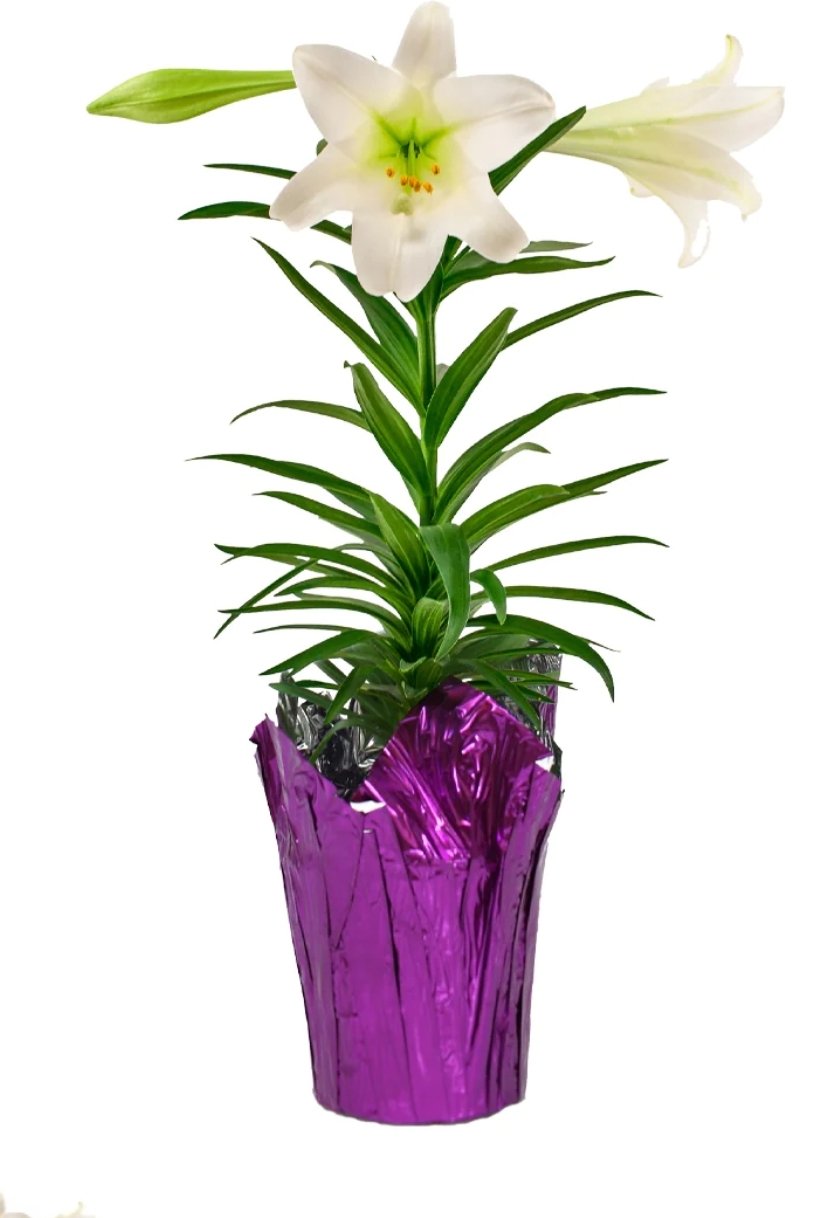Reblooming your
Easter Lily
Easter lilies (Lilium longiflorum) bloom with distinctive white flowers. Although this method will work with any color of lily as pink and yellow are becoming more popular as well. The Easter lily hardiness zone, according to the U.S. Department of Agriculture, includes zones 4 through 8. We here at the Kirtland Garden Club are in zone 4. The plants grow from bulbs and normally flower in midsummer. Spring-blooming Easter lilies have been "forced" in greenhouses where temperature and light are strictly controlled to bring them into bloom much earlier than normal. Healthy Easter lilies can be transplanted to your garden to be enjoyed for many years to follow. Keeping your Easter Lily blooming is easy, keep it moist, but NOT standing in water, and in indirect light. Keep it away from drafts as well. Remember that Easter Lilies are just white Asian/Oriental lilies which many of us already have growing in our gardens. This growing guide will show you how to transition your Easter Lily from a forced indoor potted plant to a member of your outdoor perennial garden. It’s quite easy, so lets go….
After the Flowers Fade
Nothing lasts forever… After your potted Easter lily has finished flowering (hopefully long after Easter), cut off the faded blooms back to the stem, and remove any foil wrapping from the plastic nursery pot. Leave the stems and foliage intact. If the night-time temperatures outside are still below 40 degrees (which they usually are here in Michigan), place the lily in a sunny windowsill, and water whenever the surface of the soil feels dry. The plant doesn’t need as much water when not in bloom, so don’t water it like you were when it was flowering, but yet again, do not allow it to sit in water. As soon as the soil is workable in the spring, bring the Easter lily outside and place it in a shady spot for a few days so it can acclimate to the outdoors.
Plant in the Garden
Easter lilies prefer full sun, which means at least five to six hours per day of direct sunlight. Well-drained soil is essential, as the bulbs will rot in heavy clay. If you have clay soil, amend it at planting time by digging in 3 to 4 inches of compost and peat moss.
Place your lily in a place where its height is appropriate. Easter lilies are not short, so don’t plant it in the very front of your garden. The height you saw it blooming when potted, will be how tall it will be blooming next year (maybe slightly taller as the plant establishes itself). Dig a planting hole slightly deeper and wider than the lily's root ball and fill it partly with water before installing the plant. Make sure to plant so the top of the root ball is even with the top edge of the planting hole. Try not to disturb the root ball while planting. Mild liquid or time released fertilizer should be used as well to help establish the plant. Mulch well the first winter to prevent heaving.
Easter Lily Care
Easter lilies are genetically programmed to bloom once a year, with the number of individual flowers increasing as the plants mature. Before a plant can bloom or rebloom, it must store energy in the flower bulb. This means that an Easter lily that has been forced into magnificent bloom in March or April needs to store enough energy for the next flush of blooms. Generally, even if the lilies are planted outdoors as soon as they finish flowering in spring, they will not bloom again until the following summer.

